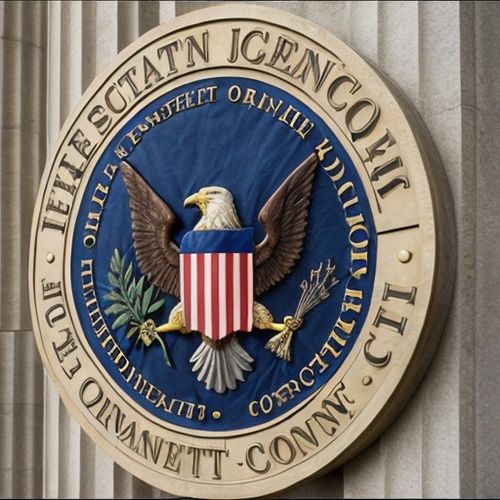The global financial system continues to grapple with the ever-evolving challenge of money laundering, prompting regulators and institutions to refine their anti-money laundering (AML) frameworks. At its core, AML compliance isn't merely about ticking boxes—it's about understanding the intricate dance between criminal ingenuity and regulatory response. Financial institutions now operate in an environment where the stakes have never been higher, with penalties for non-compliance reaching staggering figures and reputational damage becoming increasingly difficult to repair.
The philosophical underpinnings of AML regulations trace back to a simple premise: dirty money must never find sanctuary within legitimate financial channels. This principle manifests through rigorous customer due diligence, where banks must "know their customer" beyond superficial details. The practice has evolved from basic identity verification to sophisticated risk profiling that considers geopolitical factors, transaction patterns, and even behavioral analytics. What began as a straightforward verification process has transformed into a multidimensional assessment of financial relationships.
Transaction monitoring systems represent the central nervous system of AML defenses, yet their implementation often reveals a troubling gap between theory and practice. Many institutions still rely on rule-based alerts that generate overwhelming false positives—some estimates suggest up to 95% of alerts require no action. This inefficiency doesn't just waste resources; it creates alert fatigue that allows genuine threats to slip through. The industry stands at a crossroads where legacy systems must either adapt through machine learning enhancements or risk becoming obsolete against increasingly sophisticated laundering techniques.
Risk-based approaches have emerged as the regulatory gold standard, acknowledging that not all customers or transactions carry equal risk. This paradigm shift requires institutions to exercise judgment rather than apply uniform measures—a concept that sounds logical but proves challenging in implementation. High-risk jurisdictions, politically exposed persons, and complex corporate structures demand heightened scrutiny, while low-risk retail customers shouldn't be burdened with excessive checks. Striking this balance tests the cultural maturity of compliance teams and the willingness of senior management to support nuanced decision-making.
The role of human intelligence in AML operations often gets overshadowed by technological discussions. While algorithms process data at unimaginable speeds, they lack the contextual understanding that experienced investigators bring to suspicious activity reports. The most effective compliance programs foster collaboration between technologists and financial crime experts, creating feedback loops where machine learning models improve through human insights. This synergy becomes particularly crucial when dealing with emerging threats like cryptocurrency laundering or trade-based money laundering schemes that exploit gaps in automated monitoring.
Regulatory expectations continue ascending to new heights, with recent emphasis on beneficial ownership transparency causing ripples across corporate banking. The Pandora Papers revelations underscored how opaque ownership structures facilitate illicit flows, prompting jurisdictions worldwide to accelerate beneficial ownership registry implementations. For compliance officers, this translates into digging through layers of corporate veils—a task complicated by differing international standards and deliberate obfuscation tactics employed by those seeking to hide assets.
Enforcement trends reveal regulators' growing impatience with superficial compliance. Nine-figure penalties now regularly target not just deliberate violations but also what authorities deem "compliance program deficiencies." This hardening stance reflects regulators' acknowledgment that money laundering fuels everything from drug trafficking to terrorism financing. Financial institutions must consequently view AML not as a cost center but as an existential priority—a shift requiring board-level engagement and substantial investment in both technology and talent.
The future of AML likely hinges on two parallel developments: regulatory harmonization and technological innovation. While the Financial Action Task Force provides international standards, jurisdictional differences create compliance headaches for global banks. Simultaneously, advancements in artificial intelligence present both opportunities and challenges—predictive analytics may detect complex laundering patterns, but they also require explainable AI frameworks to satisfy regulatory scrutiny. Institutions that navigate these dual imperatives successfully will define the next era of financial crime prevention.
Ultimately, effective AML transcends regulatory compliance—it's about safeguarding the integrity of the global financial system. As laundering techniques grow more sophisticated, so too must the defenses. The coming years will test whether public and private sectors can maintain the pace of innovation required to stay ahead of those seeking to exploit financial systems for illicit gain. What remains clear is that AML isn't a static discipline; it's an ongoing arms race demanding constant vigilance and adaptation.

By Benjamin Evans/Apr 24, 2025

By Olivia Reed/Apr 24, 2025

By David Anderson/Apr 24, 2025

By David Anderson/Apr 24, 2025

By Amanda Phillips/Apr 24, 2025

By Emily Johnson/Apr 24, 2025

By Sarah Davis/Apr 24, 2025

By Jessica Lee/Apr 24, 2025

By John Smith/Apr 24, 2025

By Grace Cox/Apr 24, 2025

By Olivia Reed/Apr 24, 2025

By Lily Simpson/Apr 24, 2025

By Noah Bell/Apr 24, 2025

By Megan Clark/Apr 24, 2025

By Noah Bell/Apr 24, 2025

By George Bailey/Apr 24, 2025

By George Bailey/Apr 24, 2025

By Natalie Campbell/Apr 24, 2025

By Daniel Scott/Apr 24, 2025

By Benjamin Evans/Apr 24, 2025